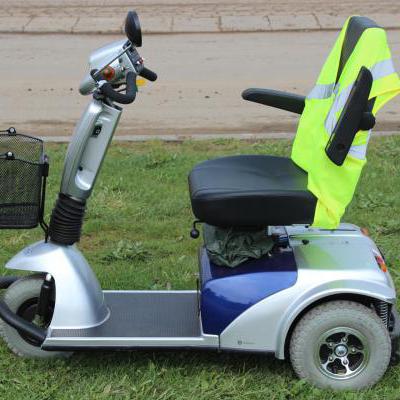Medical photographer (Medisch fotograaf)
Information on this skill...
A medical photographer photographs patients when a doctor wants to clarify a condition, or photographs patients when a doctor wants to capture certain external characteristics of patients. In these cases, a medical photographer is responsible for taking good photos of the patient in question. Often these photos are taken from very close by, so that all specific characteristics are captured very clearly. In addition, photos can be taken for scientific purposes. Photos can also be taken for trade journals or conferences, which may only be used after permission. If there are injuries to patients inflicted by others, photos can also be taken that can later serve as evidence during a possible court hearing. A medical photographer only works with the permission of patients, because otherwise no photos may be taken. Nowadays, few people work as medical photographers, because medical photos can now also be taken by medical specialists. This does not alter the fact that there are still specialized medical photographers working on behalf of doctors and medical specialists. A medical photographer may also be responsible for making video recordings if necessary. As described earlier, the profession of medical photographer is not very common nowadays. In most cases, this concerns internal healthcare workers, who are responsible for medical photography. Medical photography can be used for various reasons. Think, for example, of recording moles, nose changes, jaw changes and abnormalities. Medical photography can also be useful, so that different doctors can look at a condition without having to call the patient in question all the time.
A medical photographer is therefore a photographer who usually works internally for a hospital. A medical photographer is in many cases a nurse, who is specifically responsible for medical photography. Taking medical photos and videos can be important for medical specialists for a variety of reasons. Think, for example, of recording a rhinoplasty or eye correction in advance. As a medical photographer, you generally work within hospitals, in which the medical photographer has his own office. In most cases, patients are referred by a medical specialist to the medical photographer to have certain body parts photographed. Photographing body parts can be carried out for various reasons, such as for scientific research, for clarification from other medical specialists or to serve as evidence if it concerns an abuse. In almost all cases, patients will have to agree to use the photos. The photos taken by a medical photographer are generally added to the patient's record of the patient in question, so that all other medical specialists involved with the patient can view the photos. This usually concerns patients who have to undergo surgery. Some medical specialists who use medical photography are thoracic surgeons, surgeons, oral surgeons, pathologists, dermatologists and internists. GPs can also use medical photography.
WHY MEDICAL PHOTOGRAPHY
Another reason to take medical photos of patients is because of forensic research. These types of photos are then later used together with forensics to serve as evidence in a possible lawsuit, or to be able to prove the injury in insurance cases. It can also be important to take medical photos in the event of occupational accidents. In that case, an insurance doctor can also use those medical photos. As described earlier, medical photographers have to deal with strict regulations and confidentiality obligations. Not everyone is allowed to work as a medical photographer, because a medical photographer must follow a specific training, in which all medical and scientific facets are taken into account.
WHAT DOES A MEDICAL PHOTOGRAPHER DO:
TRAINING TO BECOME A MEDICAL PHOTOGRAPHER
There are no specific training opportunities to work as a medical photographer. However, there are training opportunities for the profession of photographer at both MBO level and hbo level. At Mbo you can start with the photography employee training at level two, and then follow the MBO photography course at level four. The training to become a photographer through the Mbo school will usually take four years and prepares you as a photographer. If you want to learn even more afterwards, it is best to follow the private hbo education at the photo school. The direction of photographic design can be followed both in a two-year study and in a four-year study. During the programme you will also work and, depending on the chosen study, go to school one or two days a week for the theory. During the photographer training, attention is paid to the following subjects: portrait photography, lighting, editing, analog techniques, digital techniques, camera technique and creativity. But of course you also learn to work with the most famous photo programs to be able to edit your photos. As a photographer, the computer nowadays plays an important role within the profession. After your education, there are various specializations possible as a photographer that you can focus on, depending on your own wishes as a photographer. In addition, there are also plenty of external training institutes where you can follow a course. Accounting is also important as an entrepreneur.
COMPANIES WHERE A MEDICAL PHOTOGRAPHER CAN WORK
As a medical photographer, you typically work in hospitals or private clinics, under the supervision of doctors. In most cases, an in-house medical photographer is a nurse, who has special additional training. In addition, a registered medical photographer can work as an entrepreneur. In that case, a medical photographer can work for different clients. As a medical photographer, you can't just take unsolicited photos of patients. In almost all cases, the patient must first give permission in consultation with a doctor.
COMPETENCES MEDICAL PHOTOGRAPHER
The most important competence of a medical photographer is the sense of responsibility, because a medical photographer has a duty of confidentiality. In addition, a medical photographer has to deal with privacy legislation and regulators. Another important competence is communication, because in most cases you will work with different medical specialists. General medical and scientific knowledge should not be missing as a medical photographer. Generally important words are flexibility, sensitivity, integrity, improvisational ability and planning.
LABOUR MARKET PERSPECTIVE AND CAREER OPPORTUNITIES AS A MEDICAL PHOTOGRAPHER
The labour market perspective of a medical photographer cannot simply be indicated, because it concerns very specific activities. Most medical photographers work internally within a hospital and have received additional training. In addition, a medical photographer can work as an entrepreneur. There are no real career opportunities in the medical photographer profession.
TERMS OF EMPLOYMENT AND SALARY MEDICAL PHOTOGRAPHER
There are no specific employment conditions to indicate for the profession of medical photographer, because the profession is almost non-existent. An employed medical photographer will usually earn between 2000 and 2800 euros gross per month depending on his age, education and responsibilities.
The content on this page has been automatically translated from the Dutch language. For this reason, texts and videos on this page may contain small errors.
Lesen Sie diese Informationen auf Medizinischer Fotograf auf Deutsch.
Lea esta información sobre Fotografo medico en español.
Lees deze informatie over Medisch fotograaf in het Nederlands.
Mijnzzp.nl


